A post massage is performed from 30 minutes up to 72 hours after competition or activity. Many massage techniques are utilised to increase blood circulation, remove metabolic waste and calm muscles down after activity. Post event massage uses light pressured techniques alongside passive stretching to help regain normal muscle resting lengths after strenuous exercise. A post event massage helps treat and prevent delayed onset muscles, fatigue and tightness. Our massage therapists working at Physio.co.uk provide post event massages for a range of circumstances.
What type of massage is used post event?
There are many types of massage that can be used post event. The types of massage used for post event are:
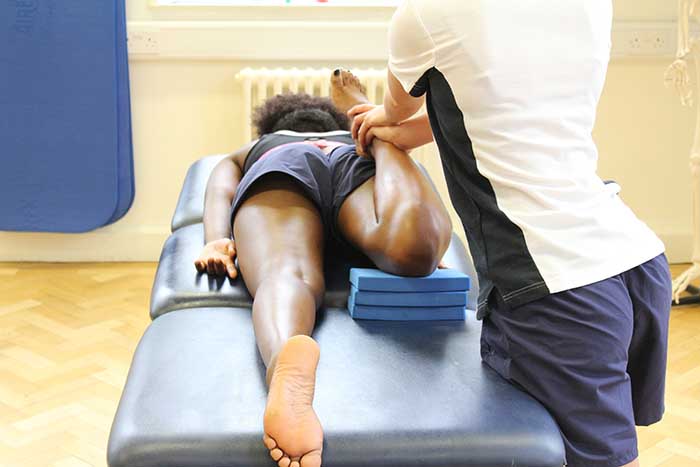
When can massage help post event?
Post event massage can help on many occasions. These include:
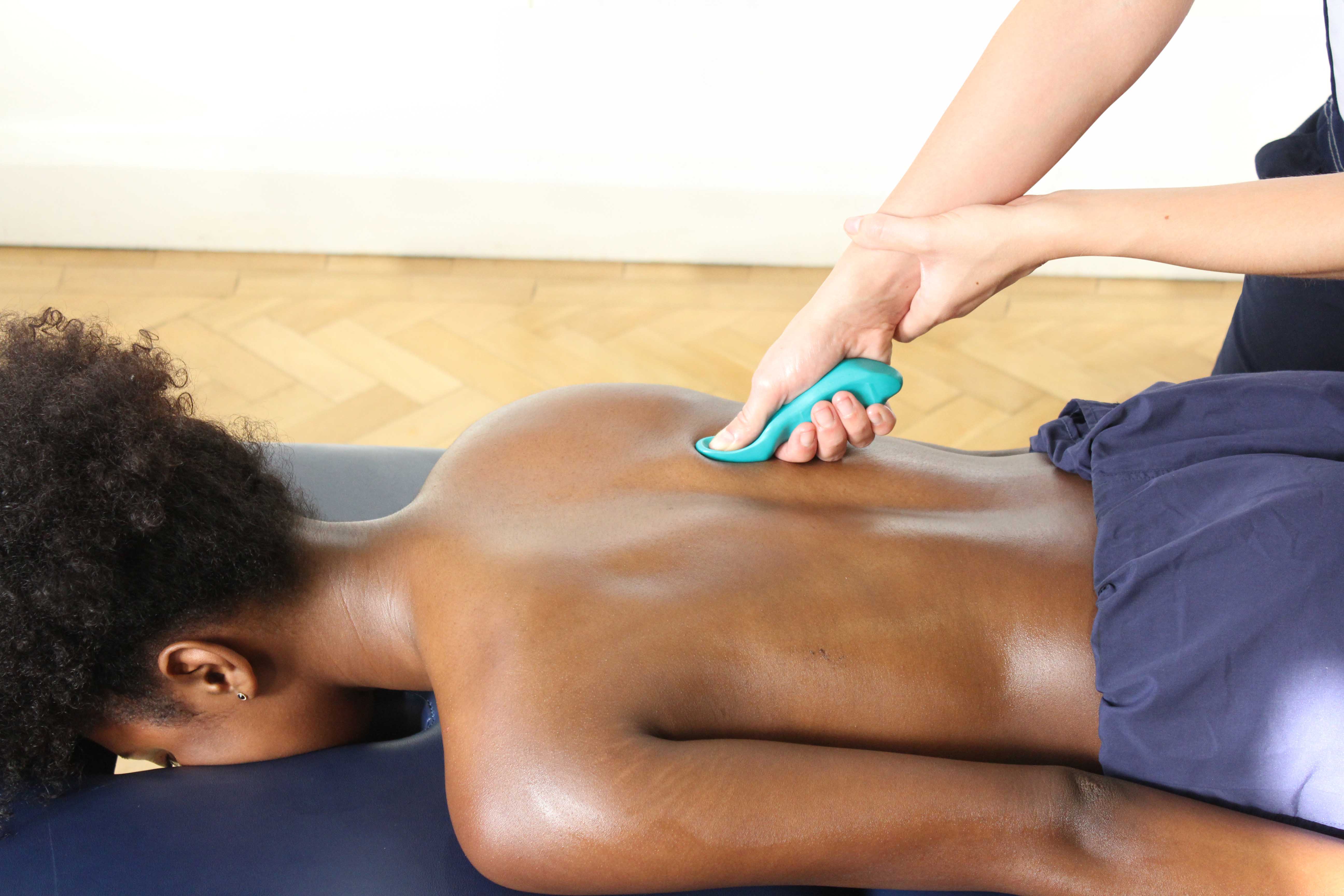 Above: Trigger point massage of lower trapezius a dn erector spinae as part of post event treatment
Above: Trigger point massage of lower trapezius a dn erector spinae as part of post event treatmentA post event massage can help treat tight muscles. Muscles can become tight after exercise due to overtraining. Tightness can be the result of microscopic tears of the muscle fibres incurred during activity. An increase of tight muscles can lead to injuries such as muscle strains and tears. Massage helps to treat muscles post exercise to prevent tightness from occurring. Massage helps by increasing the energy circulation to remove metabolic wastes. Decreasing the amount of metabolic waste left over from exercise helps to reduce the chances of tightness.
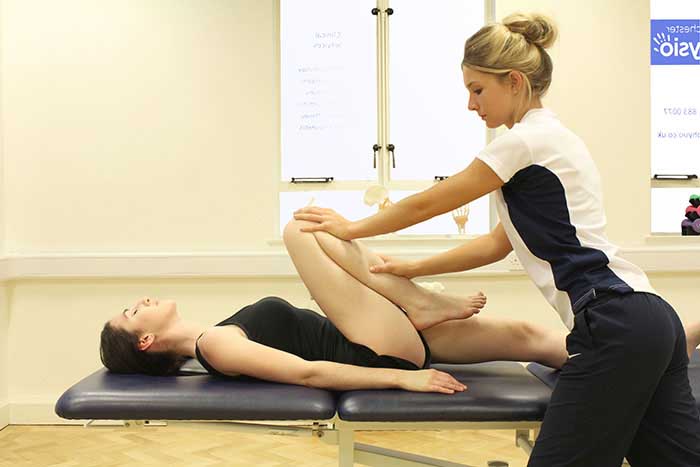
Post event massage also helps treat and prevent delayed onset muscle soreness (DOMS). A post event massage helps aid recovery after exercise. Massage can help prevent post exercise soreness, restore range of movement and encourage blood flow to tight muscles. Receiving a post event massage immediately after exercise will significantly reduce soreness, fatigue and tightness within the next 72 hours. Post event massage will help speed up the removal of metabolic wastes relieving increased tone. If DOMS are apparent following exercise, massage can also help to relieve and reduce symptoms. Massage helps to promote circulation and lengthen muscles so that movement is increased. Soreness is also reduced by increasing the temperature of the muscles so that fibres relax and loosen.
Pain can occur in the muscles after exercise. Post event massage can help treat acute pains such as muscular fatigue and tension. Post event massage helps to speed up the removal of waste products that can cause a build-up of tension. Many massage techniques are used to increase circulation and lymph flow to assist in the removal of waste products. Pain is also reduced by encouraging the muscles to relax. Muscles fibres can be loosened and stretched relieving pressure.
What are the physiological effects of receiving a massage post event?
Massage can produce many important physiological effects on the body. The physiological effects of a post event massage are:
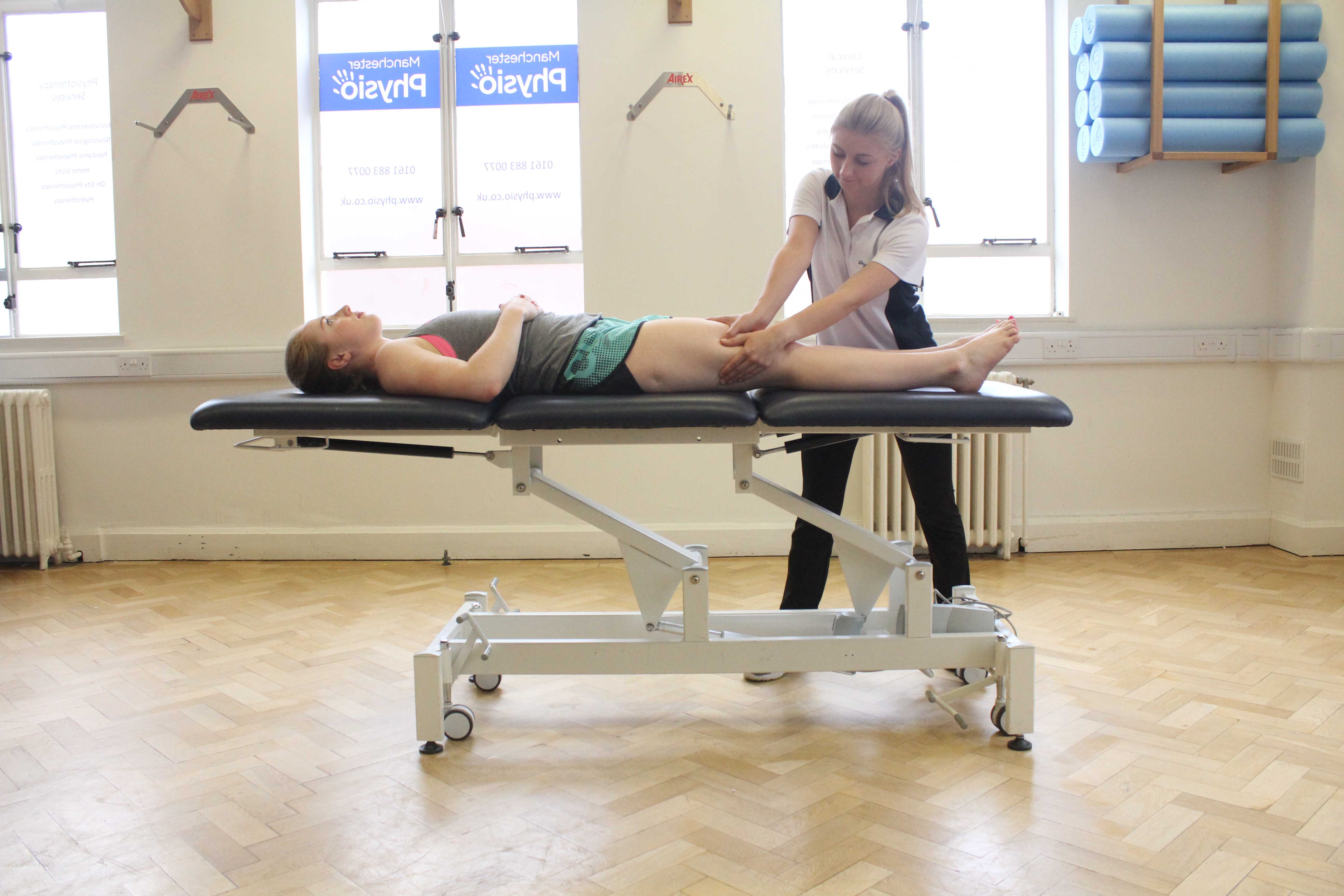 Above: Post event massage targeting vastus lateralis muscle and illio-tibial band
Above: Post event massage targeting vastus lateralis muscle and illio-tibial bandA post event massage encourages the removal of waste products from the muscles. A massage helps to actively remove waste products by applying pressure and strokes along major muscle groups. During exercise, there is a build-up of waste products, such as creatine kinase and myoglobin, in the muscles. If exercise is stopped immediately, muscles lose their energy to continue to remove waste products. When waste products are still in the muscles, they produce stiffness, fatigue and can lead to injury. A post event massage decreases the chance of soreness and tightness after exercise so that training can be continued.
Receiving a post event massage helps to increase lymphatic drainage in the body. Post event massage helps the muscles to recover from strenuous exercise by stimulating the lymphatic system and removing toxins from the body. The lymphatic system transports lymph fluid in an upwards direction towards lymphatic nodes. When fluid reaches lymph nodes, it can be drained and removed naturally from the body. The removal of metabolic wastes improves muscle condition and helps maintain flexibility.
A post event massage can also increase tissue elasticity. Many massage techniques can be used during a post event massage. Specific techniques increase tissue elasticity by increasing temperature and stretching the tissues. Tight muscles can reduce tissue elasticity affecting muscle flexibility and range of movement around a joint. Increased tissue elasticity improves function of the muscles and prevents injuries.
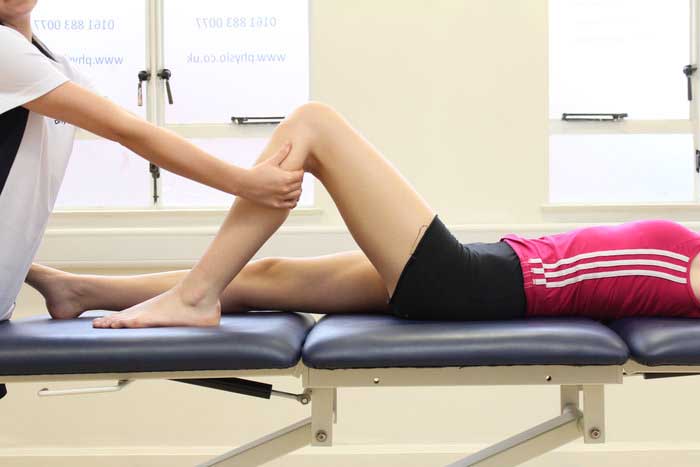
What are the benefits of receiving a massage post event?
A post event massage has many benefits. The benefits of a post event massage include:
A benefit of a post event massage is reducing DOMS. DOMS is caused by an overexertion of the muscles that result in microscopic tears in fibres and a buildup of metabolic wastes. Tearing of muscle fibres causes pain and leads to tightness. Massage helps relieve DOMS by speeding up the removal of metabolic wastes and reducing tightness. Massage increases circulation in the muscles, producing an increase of oxygen and nutrients. Oxygen and nutrients replace waste products and flush them out of the muscles.
Receiving a post event massage up to 72 hours after exercise can help improve recovery. Continuous strenuous exercise can impact the body and result in injury. Massage helps to remove metabolic wastes from the muscles to help prevent muscle soreness and tightness. Quicker recovery from exercise enables a continuation of training and performance to be maximised.
Post event massage is beneficial to encourage relaxation after strenuous exercise or competition. During intense activities, stress and adrenaline is increased. A post event massage can help stimulate the parasympathetic nervous system to bring the body back to a relaxed state. The parasympathetic nervous system regulates emotions felt in the body. Receiving a massage after exercise or competition helps to decrease stress levels allowing the body to relax physically and mentally.
Summary
A post event massage is performed up to 72 hours after exercise. The purpose of a post event massage is to help aid muscle recovery. There are many types of massage that can be used as part of a post event. Different types of post event massage include sports massage, remedial massage, Swedish massage and therapeutic massage. A post event massage can help treat tight muscles, delayed onset muscle soreness (DOMS) and acute pains. There are many benefits of a post event massage including reduced DOMS, improved recovery and relaxation. Our massage therapists working at Physio.co.uk provide post event massages for a range of circumstances.
How can I arrange a post event massage?
The easiest way to arrange a post event massage at Physio.co.uk is to email us at, office@physio.co.uk or call us on 0800 033 7800.
You can also book an appointment online and save £10

 0330 088 7800
0330 088 7800






































